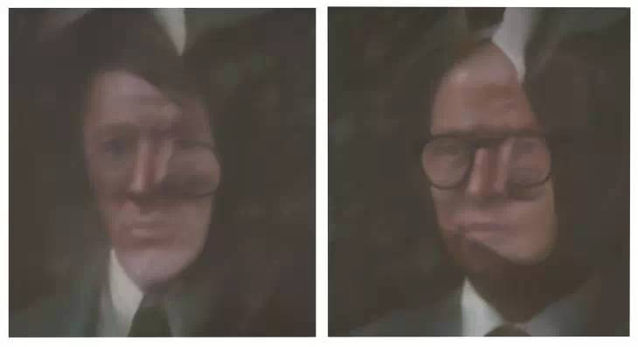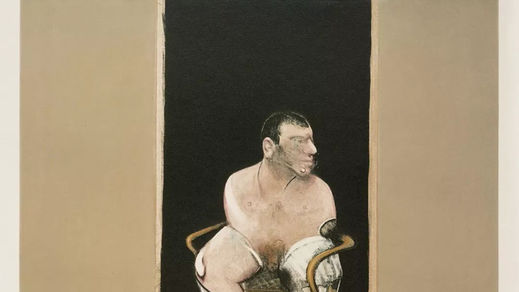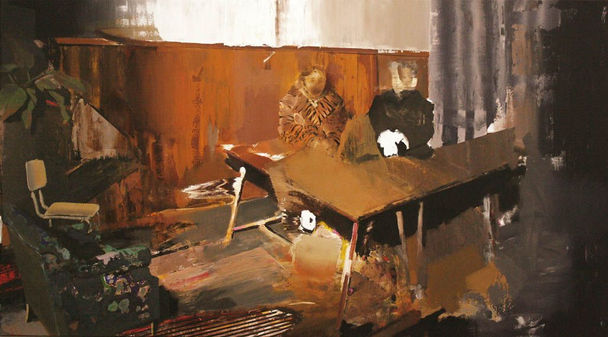Luc Tuymans
I think Luc Tuymans is a representative artist who is concerned with the vision . as he said in his interview "At present, there are fewer and fewer curators from the visual perspective. Many curatorial themes are still repeating the old tune of sociology in The 1980s and producing a variety of indigestible pseudo-intellectual understandings of the popular philosophical system. Many scholars are being misunderstood by incredible. The theory of Derrida, Deleuze, etc. was severely simplified into a general introduction in the textbook and then passed on to the students, the subtleties have been lost. If students can't go deeper with their own interests and understanding, the only thing that will come out is the similar and diluted knowledge and intelligence, whose only characteristic is stupidity."
Also, he has set up a perfect instance of how to progress the artist's individual methodology, which is associated with sorting out a painting language that weaves the artist's concept system. firstly when he deals with different subjects, his collection of source images ranges from the stultifying banal (embroideries , Christmas decoration , ornamental plates) through images with essential ramifications (portraits , mannequins , diagnostic images based on medical textbooks) to images directly related to some of the most heinous events of the twentieth century (The Holocaust, the turmoil of the Belgian Congo). and there has been an " equal treatment " in his working approach, for example, in the historical subject he has flatten out the hierarchy of the genres of painting that exist within his own practice , He paints a cardboard box as much care and attention as he paints a gas chamber, and for his portraits and semi-portraits, it is difficult to distinguish who is the celebrity and who is the patience.
Moreover, Regression is another adopted form of depiction in Luc's methods like the paintings of still life. he doesn't see it so much as a regressive way of treating certain issues, he would rather describe it as a form of affirmation as a statement, which is a tougher statement than it in the early works , they were more naïve , pared back to the essential and communicated content , In a simple way , which was also a graphic way, what it comes to the “regressive work “ the view has to cope with a different kind of confrontation . precisely when the paintings are apparently mere naturalistic, the level of predictability falls. So there actually have been very less dazzling and eye-catching colors and no the obviously overstated gestures in his oeuvre, which to some extents is able to leave a stronger voice in audiences' mind, and envoke a kind of collective empathy.
Gerhard Richter
it is very inevitable for those who are performing painting as their art language to look at the works by Gerhard Richter, similar to Luc Tuymans, he also focused on the development of a methodology that contextualizes all his concepts with practical works in his early study. also date back to the time when the painting was being challenged by many sorts of art forms, especially the photography, his working experiences have been serving as the guide book or a little inspiration for certain artists to find a position between the painting and photograph.
ChangLong Li
ChangLong Li is a very talented and young Chinese artist who has had many significant effects on me. In his painting, we can find out a sense of drama and the multiple spaces that articulates the connection between the different objects through a unique painting language. Indeed, his very early painting Performance ! was based on an artificial spectacle built in his own studio. Although Li has literally stripped the realistic visual effect and the tense colors in depicting the characters in paintings, the sense of drama has been naturally inherited and passed down to his recent artworks. Drama to some extents is the appropriate presentation to reflect social issues.
From his early to current work, there is a process in which, he has made huge efforts to experiment the painterly issues. The paintings no longer include the flat handling brush stroke, rather what we can see through the thick textures are the overlap and friction of various gray colors and the interaction between the underlayer and surface layer. artist's focus at the same time has shifted on consolidating the internal structures of the whole picture and the shapes, edges, and textures of objects including some banal stuff and ordinary still lifes, people in his painting are now usually vague and even being shown in portion. from this point, his painting is taking the neutral place between figurative and abstract.
Clearly, in the early stage, he paid more attention to the conceptual thins that he now considers as the aspect that he is not best at. Instead, taking the visual as the concept may happen to be what he is quite excellent. Thus, taking visual as a concept means that his deep or superficial concepts have been literally internalized into the visual, the painterly elements, the connection of brushstrokes, and the relationship between colors. In his treatment of color layers and the boundary, we can find the similarity with the classical painting, however, he never did his painting according to any strict classical technique, but it is based on the same logic, the logic of painting.
Francis Bacon
Bacon's paintings draw my attention to the contradiction made by the geometric forms and the twisted human figure. I'm quite fascinated by his unique way in dealing with details and the edge between the background and the characters. Which allows the figurative brush marks harmoniously embedded into flat but loaded layers of color.
Yan Pei Ming
Yan Pei-Ming (b. 1960 in Shanghai) is a Franco-Chinese painter based in Dijon, France. His canvases are typically mono- or bi-chromatic and painted with large brushes (sometimes a broom). With a mastered economy of marks, he delineates his compositions with broad, sweeping gestures and visible drips, resulting in images that dissolve into near-abstraction at close view.
Yan Pei-Ming lends a new, intense presence to images of celebrities that we’ve seen countless times on TV or in the newspapers and are reproduced thousandfold. His paintings are literally the results of intense actions rather than frozen structures of colors and forms. They are in constant agitation, with large and fast strokes conquering the moving ground, often of immense dimensions. However, they are by no means simply expressionistic, extravagant, and self-indulgent manifestations. Instead, they are always highly "economical" and efficient—black and white, occasionally red and white, are the only colors that he employs in creating a universe beyond the "reality" of the real color.
we should know that Ming's biography is marked by radical and drastic changes introduced by the Chinese Culture Revolution, that He was not the only one to go through this complex experience, of course; it stands for an entire generation that has experienced and survived the dramatic changes and global geopolitics. so for his celebrity portraits, he drew from iconic images of historical figures that have exerted profound influences on him and his contemporaries such as Mao Zedong, the Pope, etc. They are not only images that have marked his memory of public spaces dominated by politics; they are also key elements that not only constituting his own intimate and personal memory and imagination, in addition to that, they can serve as a representativeness of the political cultural and economic issues that happened in that period of time, which can arouse the collective experience in audiences, especially when it is being illustrated in the form of artwork.
in other words, this politically engaging quality renders his work not only more exciting but also increasingly relevant in our time of massive change.
However, Ming’s portrait paintings are far from any kind of celebration or worship to those personalities. On the contrary, they are provocative, critical, and even subversive. which is the force in order to mobilize public opinion and social awareness. This provocation not only subverts the convention of artistic representation; more importantly, it challenges the common sense of values in public language.
Technically, Ming's passionate, dynamic, and powerful gestures, mastered brushstrokes, and monochrome oil paints allow himself to treat people whether they are elite or disprivileged in the same manner. For instance, in the 1990s, Ming produced large series of portraits of people from the bottom of society such as prisoners, prostitutes, and homeless children, etc. in a peculiarly celebratory fashion, I think his equal treatment is also a significant character in the methodology of many painters, including myself.
For artists who are concerned with politics, it is inevitable to give a response to global issues like humanitarian crisis and the devastate situation left by wars, but how to make a different representation compared with photographs that we know all too well from news coverage? we may find an answer in the watercolor Sudanese Child (2006), a starving child from a Third-World country staring at us from vacant eyes. In spite of the horror it conveys, it’s an image that has almost become a banal and stereotype, but after making it a painting Yan Pei-Ming succeeds in giving the image back its urgency—through a form of painting that is as analytical as it is powerful in expression.
Marlon Kroll
Adrian Ghenie
Ghenie is an ardent researcher of the history of the 20 th century, being preoccupied with unearthing forgotten narratives, marginal events and seemingly insignificant details in order to compose a visual vocabulary that is both compelling and uncanny. The subject matter does not revolve around a single set of concerns, and yet the different themes of Ghenie's paintings seem to connect. by which, Adrian takes the viewer on a journey through some of the darkest states of human existence – oppression, abjection, tragedy, persecution, poverty, loneliness and misery.
The faces of the characters in most of his painting are blurred as if their very identity is being disrupted, annihilated in the process of painting. The manner in which Ghenie uses photographic sources and then paints images which blur, scrap and obfuscate these sources has led to the obvious comparison to other post photographic image based painters such as Francis Bacon and Gerhard Richter.
Uwe Wiittwer
his work reflects on the nature and meaning of images. His source material is carefully chosen from digital representations — images of images — researched in the depths of the internet. Throughout his work, Wittwer is concerned with authenticity and truth, multiple refractions of reality, and the role of the artist as image hunter and voyeur

























































































































